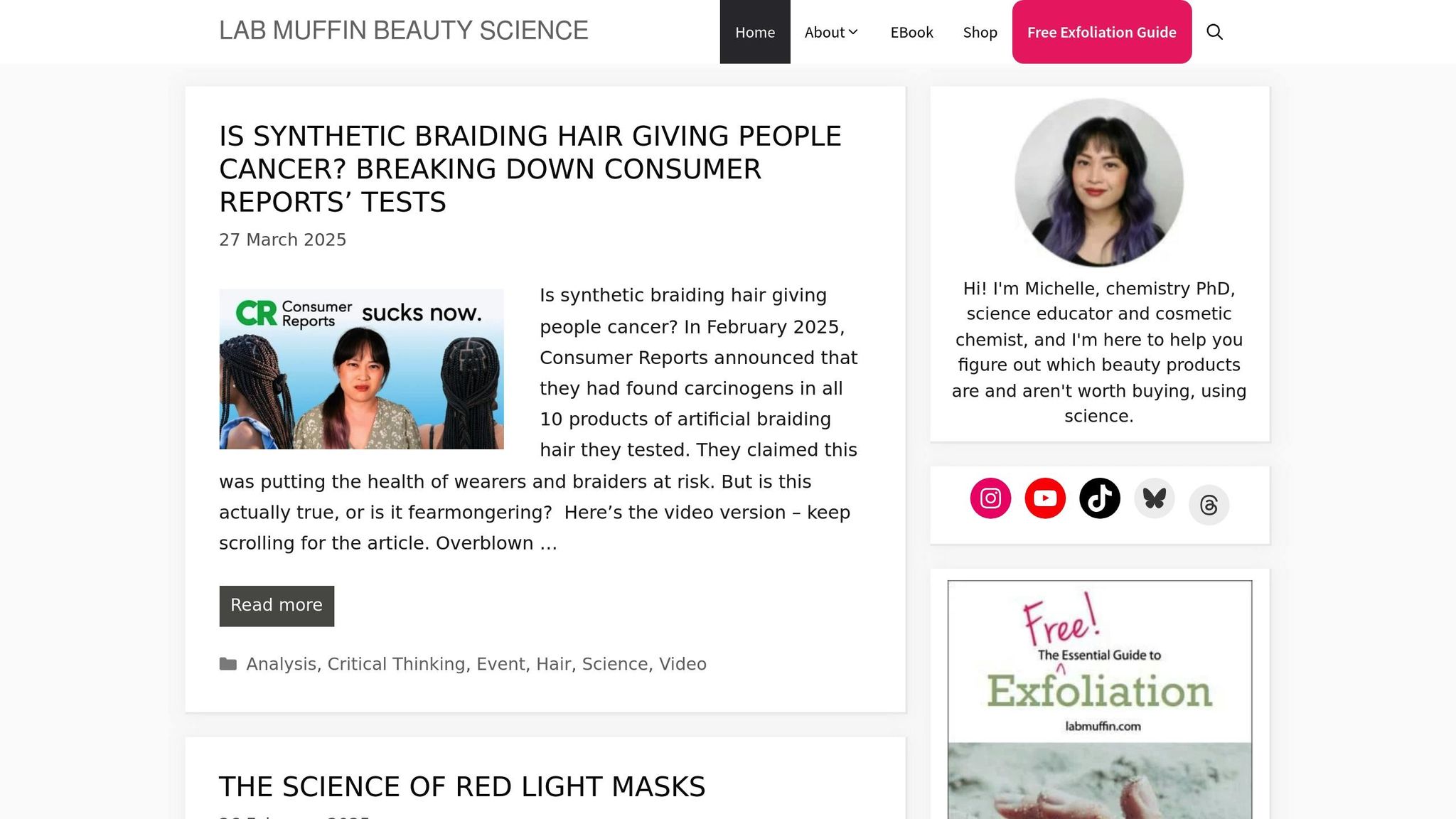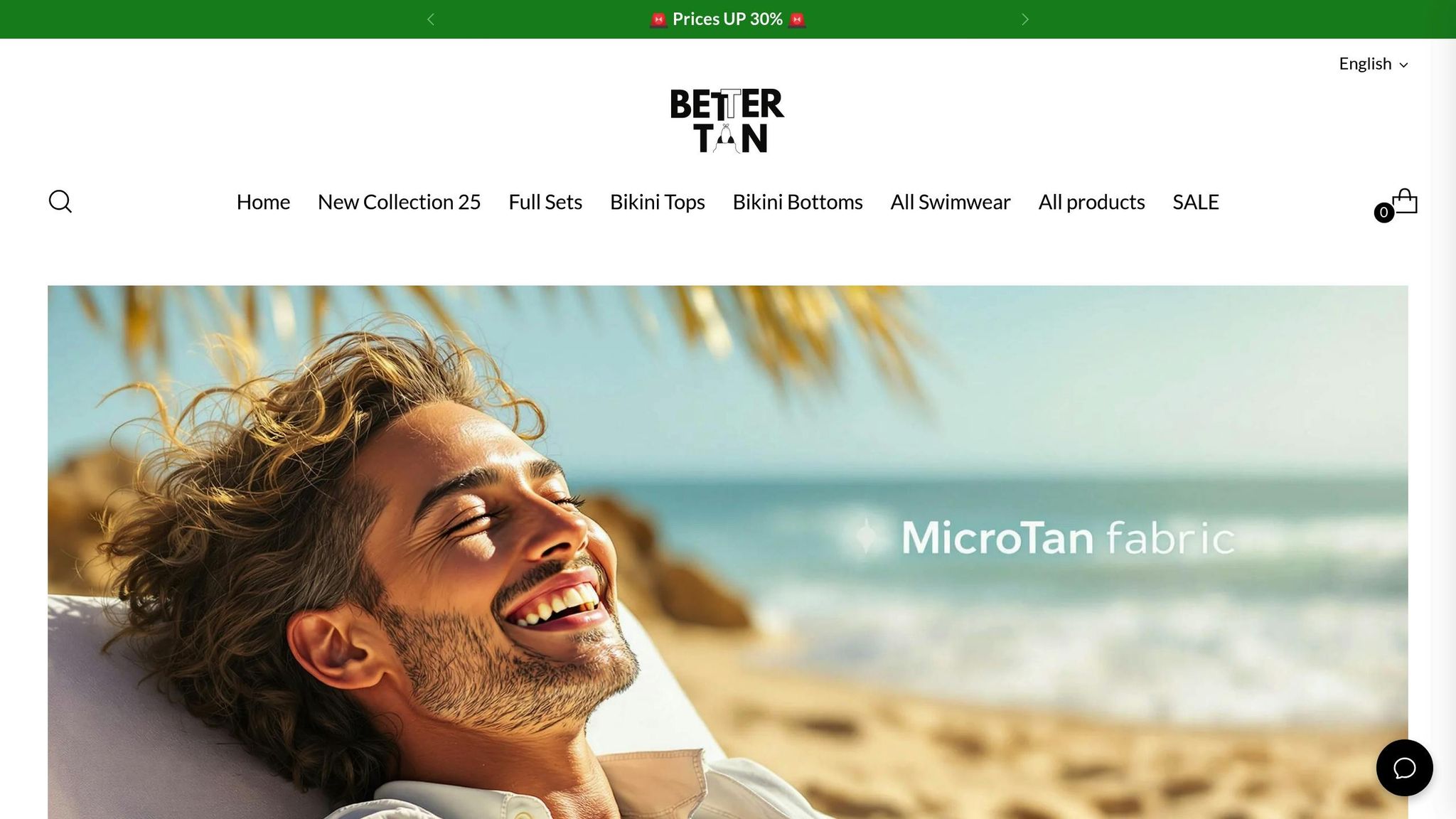Understanding how fabric weave impacts UV protection can help you make smarter swimwear choices. Here's the key takeaway: Tightly woven fabrics block more harmful UV rays, while loosely woven fabrics let more through. Modern swimwear technology, like BetterTan's MicroTan®, balances protection with comfort and tanning benefits.
Key Points:
- Dense Weaves: Provide strong UV protection by minimizing gaps between threads.
- Open Weaves: Offer less UV defense due to larger gaps.
- Advanced Fabrics: Use micro-perforations for controlled UV exposure, breathability, and quick drying.
- Other Factors: Darker colors, snug fit, and UPF ratings (50+ blocks 98% of UV) improve protection.
When selecting swimwear, prioritize UPF ratings, fit, and durability to stay safer under the sun.
How to Choose UV Protective Clothing | Lab Muffin Beauty ...

Basic Principles of UV Protection in Fabrics
Understanding how fabrics block UV rays starts with the concept of UPF and how different weave constructions impact UV filtration. The way threads are interlaced and the spaces between them play a key role in determining the level of UV protection, making it an important factor when choosing UV-protective swimwear.
Dense Weaves: Strong UV Barrier
Dense weaves act like a solid shield against UV rays. The tightly packed threads leave little room for sunlight to pass through, offering reliable protection. Think of it as the difference between a brick wall and a chain-link fence. Dense weaves block UV rays effectively by:
- Packing threads closely together to minimize gaps
- Reducing fiber spacing to limit UV penetration
- Using overlapping patterns to scatter incoming sunlight
Open Weaves: Weaker UV Defense
In contrast, open weaves with visible gaps between threads provide less protection. These gaps allow UV rays to pass through more easily, increasing skin exposure. The lack of fiber density and overlap makes these fabrics less effective at blocking harmful rays. This difference in weave density has driven advancements in fabric design.
Advances in Weave Technology
Modern fabric technologies now use micro-perforation techniques to allow controlled sunlight exposure while maintaining breathability and quick-drying features. This approach balances UV protection with comfort, making it ideal for outdoor activities.
sbb-itb-d2baa00
Other UV Protection Factors in Fabrics
Several elements, including color, layering, and modern manufacturing techniques, can improve the UV protection offered by swimwear. These details can help you pick swimwear that offers better sun coverage.
Color and Layering
Darker fabrics are better at absorbing UV rays, providing more protection against the sun. Some swimwear, like BetterTan's MicroTan® technology, incorporates micro-perforations to allow controlled UV exposure, promoting an even tan while maintaining protection.
Specialized UV Fabrics
Innovative manufacturing processes now create fabrics with built-in UV protection. For example, BetterTan fabric not only offers sun protection but also dries up to 7 times faster, making it ideal for outdoor water activities.
Selecting UV-Protective Swimwear
Understanding UPF Ratings
When choosing UV-protective swimwear, understanding UPF ratings is key. A UPF 50+ rating indicates the fabric blocks at least 98% of UV radiation, offering top-tier sun protection.
Brands like BetterTan incorporate these standards into their designs, with features like their MicroTan® technology, which combines UV protection with controlled tanning.
MicroTan® Technology by BetterTan

BetterTan's MicroTan® fabric takes UV protection to the next level. It uses micro-perforations to balance sun safety with controlled exposure, meeting UPF standards while offering practical advantages for swimmers.
Here’s what it brings to the table:
| Feature | Benefit |
|---|---|
| UV Filtration | Allows balanced Vitamin D exposure |
| Quick-Dry | Dries up to 7x faster than standard fabrics |
| Tanning | Reduces tan lines |
| Comfort | Breathable and lightweight fabric |
Quality and Fit Factors
The right quality and fit are just as important as advanced fabric technology for UV protection. Here’s what to look for:
- Material Tension: Swimwear should fit snugly without overstretching, as stretching can reduce UV-blocking effectiveness.
- Coverage: Choose coverage based on your activity level and sun exposure needs. Fabrics like MicroTan® provide safety while allowing controlled exposure.
- Durability: Opt for swimwear designed to maintain its protective properties over time. Features like reinforced seams, colorfast dyes, shape retention, and chlorine resistance ensure both comfort and long-lasting UV protection.
Conclusion: Making Smart Swimwear Choices
The weave of a fabric plays a key role in UV protection, shaping how we select swimwear. While dense weaves in older designs naturally block UV rays, advancements in fabric technology - like BetterTan's MicroTan® fabric - have taken sun-safe swimwear to another level by blending protection with practical features.
Today's swimwear offers benefits that were once out of reach. For instance, BetterTan's fabric dries up to seven times faster than standard materials and uses micro-perforations to allow controlled sun exposure.
Here are the main factors to keep in mind:
- Fabric Technology: Look for materials designed to block UV rays while offering extra perks.
- Fit and Coverage: A snug fit helps maintain the fabric's protective abilities.
- Durability: Choose swimwear that holds up over time without losing its protective features.

